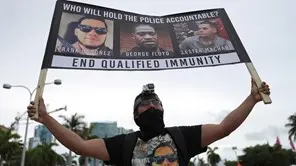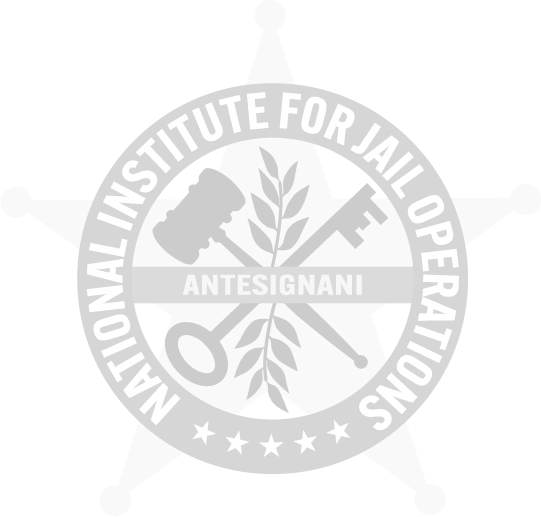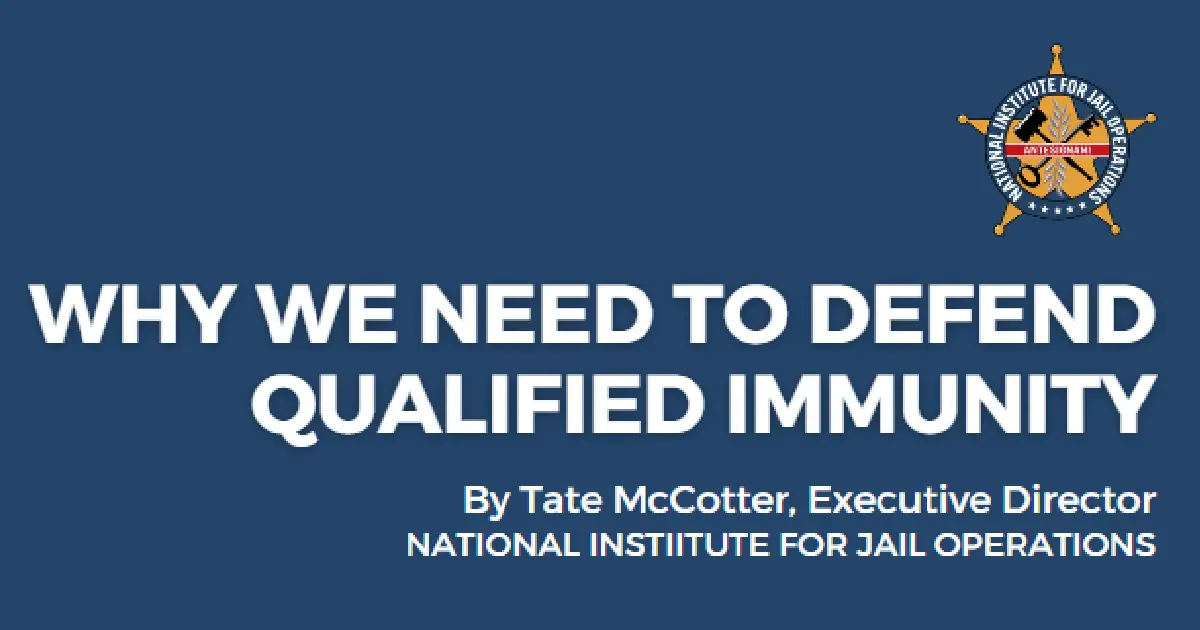Sheriffs and jail administrations come to know liability in an up close and personal manner which few other professions face on a regular basis. Most every sheriff might as well adopt “D” as their middle initial – it will stand for “Defendant” soon enough!
Keeping the public, staff, and inmates safe and secure is a challenge, especially when considering limited resources, staffing shortages, and constant interaction to provide custody, care and control of a population which does not want to be there in the first place. Sidestepping the monstrous impact of mental health, detox, drug use, gang affiliation, the average inmate is not predisposed to an Eagle Boy Scout mentality to happily and anxiously follow established facility rules when they infringe on personal wants and limitations of perceived “freedoms.” With all these factors in play, officers must make decisions every day to refuse or accommodate inmate requests, balancing the penological interests of a facility within the framework of what is legally and lawfully required. There is no one-size-fits-all-circumstances manual for policy and procedure to encompass every unique situation facing correctional officers nor has case law determined the “how to” for each operational and administrative action. As the Supreme Court has recognized, in cases not amenable to injunctive relief, “it is damages or nothing.” 1 Seeking damages against jail officials is often the vehicle of choice used to challenge the constitutionality of government conduct, but success requires facing qualified immunity defense. Qualified immunity bars actions for damages against government officials, unless the defendant violates “clearly established statutory or constitutional rights of which a reasonable person would have known.”2 Specifically, Section 1983 reads:
[T]he problems that arise in the day‑to‑day operation of a corrections facility are not susceptible of easy solutions. Prison administrators therefore should be accorded wide‑ranging deference in the adoption and execution of policies and practices that in their judgment are needed to preserve internal order and discipline and to maintain institutional security.[1]
Maintaining safety and order at detention centers requires the expertise of correctional officials, who must have substantial discretion to devise reasonable solutions to problems. A regulation impinging on an inmate’s constitutional rights must be upheld “if it is reasonably related to legitimate penological interests.[2]
BACKGROUND.
Title 42 of United States Code, section 1983, allowed for actions against those who, acting under the color of law, deprived another of “any rights, privileges or immunities secured by the Constitution and laws.”4 However, very little Section 1983 litigation occurred until the Monroe v Pape case5 was reviewed by the U.S. Supreme Court in 1961m, which involved a warrantless home search by 13 Chicago police officers. While the city of Chicago could not be sued (municipal liability was added in 1978), the ruling declared officers could be sued as acting “under the color of state law” for actions which violated the law. This decision opened the door for individual governmental employees to be sued for acts that violate the Constitution or statutes. In Harlow v. Fitzgerald, the Court upheld qualified immunity to Nixon’s presidential aides regarding their official actions, where they did not violate clearly established statutory or constitutional rights.6
The current political unrest and sustained rhetoric against law enforcement has once again put qualified immunity under sustained attack. One line of argument questions its lawfulness, while others attack its consequences. Some argue that qualified immunity defense is so powerful it renders damages actions ineffective as a check on official misconduct. Without a full understanding of its purpose and real ramifications for overreaching legislation, individual state and national politicians are pushing to end qualified immunity for law enforcement, as evident in recent legislation. For example, in Virginia, the state House of Delegates recently passed a revised bill to defeat qualified immunity after an initial defeat, leaving the Senate Judiciary Committee to block its passing two days later.7 Nationally, HB 7085, sponsored by Rep. Justin Amash (D-MI) was introduced in June 2020 to eliminate the defense of qualified immunity and currently has 66 co-sponsors while sitting in front of the House Judiciary Committee.8 In the U.S. Senate, Elizabeth Warren (D-MA) and Bernie Sanders (D-VT) proposed a similar bill, using racial injustices, excessive force, and police brutality as the justification mantra in July, 2020. During the same time, the Supreme Court declined to hear eight cases involving qualified immunity.

JUSTIFICATION FOR QUALIFIED IMMUNITY.
Qualified immunity rarely protects public officials from the threat of litigation and liability, so what is its legal purpose and practical justification?
Congress’s clear delegation of authority to the federal courts to develop common-law rules for the administration of liability under civil right laws justifies the lawfulness of qualified immunity. Those who claim qualified immunity protects individual officers or an administration and legally shields them discounts the fact that qualified immunity is premised upon requirements to abide by clearly established laws. Abusive actions, excessive force, or a deprivation of a constitutional right is not permissible by law and if courts determine such actions occurred, accountability rests on those individuals with punity. Section 1983 does not provide civil rights; it is a means to enforce civil rights that already exist.
Because of the litigious nature in corrections and detention, it is a necessity for public employers to indemnify their employees for their legal costs. Indemnification shifts the financial burden of litigation from public employees to their employers. Qualified immunity, in turn, encourages public employers wishing to minimize the cost of indemnification to train their employees to know and comply with legal rules and statutes. It also discourages inmate advocate groups and plaintiffs’ lawyers9 from bringing a wide variety of novel damages claims, and minimizes costs imposed on innocent third parties if public officials faced liability in cases in which the legality of their conduct was unclear.
To be “clearly established,” the law must be sufficiently clear ‘that every ‘reasonable official would have understood that what he or she is doing is a violation of that right. Simply stated, “existing precedent must have placed the statutory or constitutional question beyond debate.”9 This is a critical point for consideration. If the law is not clearly established, the agency and officers must rely on policies and procedures written according to clearly defined laws, training, experience, and administrative discretion to justify operational gaps. For practical example in a jail setting, consider the governance of the housing and management of transgender inmates including sex reassignment surgery for Kansas inmates. If an inmate claims gender identity dysphoria seeks breast enhancement as a constitutional right, does the administration have to grant that request using taxpayer dollars? The law is not yet clearly defined to determine the answer under Kansas statutes and the 10th Circuit Court of Appeals, leaving administrators the deference to make the decision. What about the use of video visitation and other technology being associated with a fee for inmate use? The right to communicate is unequivocally established, but the FCC has not yet determined how or if this technology may be applicable to inmate rates and fees.
Qualified immunity requires courts to articulate constitutional norms in a way that line level officers and the entire chain of command within an organization can be readily trained and supervised to meet legal requirements. Often, qualified immunity is granted when the courts produce broad standards based on legal principles, rather than determining specific rules capable of ready application. Clearly established law is binding regardless of a jail’s size or whether an administration has adopted a direct or indirect supervision management style. The courts generally rule with an understanding each correctional facility is subject to different designs, populations, staffing, budgets, and resources, and requiring flexibility in the application of a legal ruling is necessary among each agency. Various jail management responses to the COVID-19 pandemic display how jails have safely met and followed CDC guidelines without them all be implemented or carried out in the exact same manner. How a jail socially distances can be accomplished uniquely and individually. Likewise, neighboring jails can both be compliant to the Prison Rape Elimination Act and still protect inmates against sexual abuse implementing different operational strategies and techniques.
To expect administrators to correctly anticipate the resolution of constitutional debates which many lawyers and judges can reasonably disagree is completely unrealistic. Law enforcement officials cannot be expected to apply them in the field without a significant error rate or become dangerously paralyzed as a result of avoiding any conduct that might trigger liability under the broadest concept of an abstract, undefined standard. If courts are to expect that constitutional norms are respected in the real world, they must be able to articulate constitutional law in a manner comprehensible to the officer on the street. If they fail to do so, a grant of qualified immunity may so more about the failings of the judiciary than the failings of public employees.
Opining strictly to law enforcement in justify qualified immunity could provide additional insights, but such references might be perceived as self-serving. Many courts have articulated the risk that fear of personal monetary liability and harassing litigation will unduly inhibit officials in the discharge of their duties.10 Therefore, it would be beneficial to see how the courts have defended its justified use.
In Ashcroft v. Iqbal, the Supreme Court held “The basic thrust of the qualified-immunity doctrine is to free officials from the concerns of litigation, including avoidance of disruptive discovery. There are serious and legitimate reasons for this. If a government official is to devote time to his or her duties, and to the formulation of sound and responsible policies, it is counterproductive to require the substantial diversion that is attendant to participating in litigation and making informed decisions as to how it should proceed.” 11 Accordingly, qualified immunity is intended to spare defendants the burden of defending litigation as well as paying damages awards.
The Supreme Court declared qualified immunity’s protections “are not limited to liability for money damages; they also include the general costs of subjecting officials to the risks of trial— distraction of officials from their governmental duties, inhibition of discretionary action, and deterrence of able people from public service . . . . [E]ven such pretrial matters as discovery are to be avoided if possible, as [i]nquiries of this kind can be peculiarly disruptive of effective government.” 12
CONCLUSION.
The doctrine of qualified immunity is sensible and necessary. Eliminating it will cause considerable unintended consequences, exacerbating an already precarious dilemma in the recruitment, hiring and retention of law enforcement. It can ultimately destroy the budgets of every local and state government. The amount of money state and local governments must devote to litigation costs necessarily comes from taxes or, more likely – considering recent economic downturns due to COVID-19 and anti-law enforcement sentiment – from a reduction of funding public services. These monetary costs are most likely to hit hardest for those communities with the least political power in government budgeting—the poor and disadvantaged. An administrator’s burden and the cost of incorrect predictions should not be externalized to taxpayers or to those dependent on the government services that must be cut when funds are diverted to the payment of judgments and other costs of litigation. As a profession, qualified immunity should be defended and extra attention given to ensure correctional officials know and comply with clearly established law.13 Doing the right things consistently in efforts to run a constitutionally safe facility minimizes the position to eliminate qualified immunity for law enforcement.
REFERENCES:
- Bivens v. Six Unknown Named Agents of Fed. Bur. of Narcotics, 403 U.S. 388, 410 (1971) (Harlan, J., concurring in the judgment). Accord, e.g., Harlow v. Fitzgerald, 457 U.S. 800, 814 (1982) (“In situations of abuse of office, an action for damages may offer the only realistic avenue for vindication of constitutional guarantees.”).
- Pearson v. Callahan, 555 U.S. 223, 231 (2009) (quoting Harlow v. Fitzgerald, 457 U.S. 800 (1982)) at 818); see also Monell v. Dep’t Soc. Servs of N.Y., 436 U.S. 658, 690-95 (1978); see also Butz v. Economou, 438 U.S. 478, 504 (1978). Accord, e.g., Wilson v. Layne, 526 U.S. 603, 609 (1999); Malley v. Briggs, 475 U.S. 340 n.2 (1986); Harlow, 457 U.S. at 818 n.30.
- 42 U.S.C. § 1983 (Civil action for deprivation of rights)
- 42 U.S.C. § 1983 (Civil action for deprivation of rights)
- Monroe v. Pape, 365 U.S. 167 (1961)
- Harlow v. Fitzgerald, 457 U.S. 800 (1982)
- WTVR CBS 6. (2020). Virginia Senate Committee Kills Bill That Would End Qualified Immunity for Police. Retrieved September 11, 2020 from https://www.wtvr.com/news/local-news/virginia-senate-committee-kills-bill-that-would-end-qualified-immunity-for-police
- H.R. 705 Ending Qualified Immunity Act. 116th Congress (2019-2020). https://www.congress.gov/bill/116th-congress/house-bill/7085
- Reichle v. Edwards, 566 U.S. 658, 664 (2012) (quoting Ashcroft v. Al-Kidd, 563 U.S. 731, 741 (2011)).
- Ziglar, 137 S. Ct. at 1866 (quoting Anderson v. Creighton, 483 U.S. 635, 638 (1987)). Accord, e.g., Filasky v. Delia, 566 U.S. 377, 389 (2012); Richardson v. McKnight, 521 U.S. 399, 409-12 (1997).
- Ashcroft v. Iqbal, 556 U.S. 662, 685 (2009)
- Mitchell v. Forsythe, 472 U.S. 511, 526 (1985)
- See Legal-Based Jail Guidelines https://jailtraining.org/guidelines/
CONTACT US:
The National Institute for Jail Operations (NIJO) was formed in 2011 as the primary resource dedicated to serve those that operate jails, detention and correctional facilities. Recognizing the enormous liability and increasing litigation facing administrators, NIJO provides a compilation of legal-based resources and information for agencies to make facilities safer and more secure, proactively defend against frivolous litigation, and protect against adverse publicity and liability. If you have questions about a specific training topic or are looking for more information on training, don’t hesitate to ask. Contact info: support@jailtraining.org



